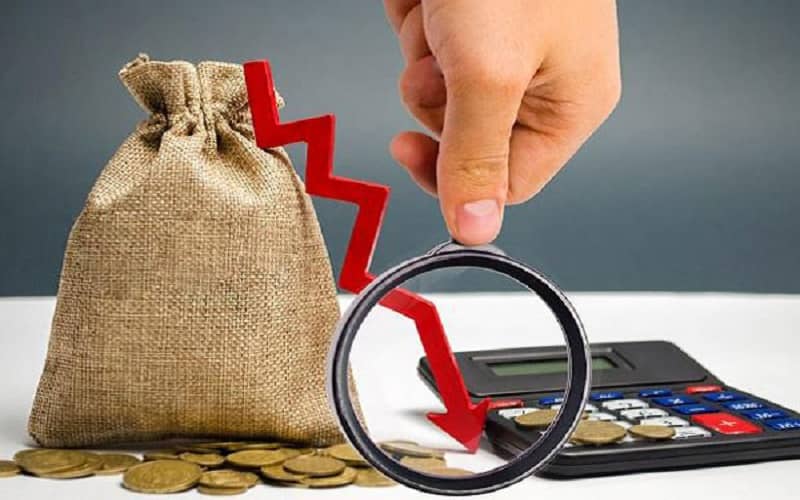Facebook
Twitter
LinkedIn
Pinterest
Reddit
Email
Print
The economic collapse in Iran has reached such critical depths that even experts affiliated with the regime now openly acknowledge its severity in state-controlled publications. In a recent article, regime-linked economist Masoud Nili and sociologist Mohammad Fazeli addressed the unraveling of state functionality. Both point to a shared conclusion: Iran is facing a profound crisis of governance, not simply due to mismanagement, but because of the regime’s fundamental inability to address the mounting “mega-challenges” confronting the nation.
#IranProtests: Nationwide Truckers’ Strike Highlights Regime’s Deepening Economic and Political Crisishttps://t.co/MvIbvdqc4x
— NCRI-FAC (@iran_policy) May 26, 2025
The Disrupted Governance Chain
Masoud Nili’s analysis centers on what he terms a “state crisis”—a condition marked by the disruption of the “governance value chain.” He argues that Iran’s economic dysfunction runs far deeper than its foreign policy challenges, such as the nuclear standoff or international sanctions. Even if those issues were resolved, he contends, the structural problems of the Iranian economy would persist due to the absence of intellectual consensus and coherent economic strategy.
A key part of Nili’s argument is that disagreements among Iranian economists, particularly between institutionalists and free-market advocates, have paralyzed policymaking. These theoretical rifts, he claims, have enabled politicians to evade tough structural reforms in favor of unrealistic, ideologically driven policies. He criticizes institutionalist economists for promoting a “fantasy world” in which complex issues like corruption, energy overconsumption, or the water crisis can be resolved without engaging in price reforms or market rationalization.
Drawing on his experience as an economic advisor during Hassan Rouhani’s presidency, Nili laments that his efforts to build consensus through economic conferences and reform roadmaps ultimately failed. He attributes this failure to the opacity and dysfunction of Iran’s decision-making apparatus, referring to it as a system driven by “closed rooms” and non-transparent institutions. This diagnosis exposes a core paradox: while technocrats may propose rational, science-based economic policies, the political structure renders these proposals unimplementable.
#Iran’s Economic Crisis Isn’t a Mystery—It’s the Regime’s Legacyhttps://t.co/yTq2D6gXgt
— NCRI-FAC (@iran_policy) April 21, 2025
By focusing narrowly on theoretical disputes, he risks mischaracterizing the root of the crisis as intellectual rather than political. For example, he interprets contradictions in economic policy, such as advocating free-market reforms while pushing for price controls, as signs of theoretical confusion, rather than recognizing them as deliberate actions by interest groups that benefit from instability and ambiguity.
The Hollowing of the State
Sociologist Mohammad Fazeli examines the same crisis through the lens of state capacity, which he sees as deteriorating across four critical dimensions: human resources, authority, financial capacity, and social capital.
Fazeli argues that the state has been hollowed out by several long-term trends: the appointment of unqualified personnel through politically driven processes, the relative decline of public sector wages, and the sidelining of competent professionals. These factors, he notes, have severely undermined the government’s ability to attract and retain expert talent.
#Iran’s Economic Crisis: Built to Break, Bound to Burnhttps://t.co/a1ZwyHDI1Q
— NCRI-FAC (@iran_policy) April 9, 2025
In terms of authority, Fazeli asserts that the Iranian state has been deliberately weakened by political actors seeking to avoid the emergence of an independent, professional bureaucracy. This has led to the proliferation of parallel institutions and quasi-governmental councils, many of which are unaccountable yet wield considerable influence. The result is a fragmented and incoherent state structure, stripped of both autonomy and focus.
Financially, Fazeli points to a declining revenue base, exacerbated by sanctions, corruption, and mismanagement, which further erodes the state’s ability to govern effectively. And socially, he notes the erosion of trust and decline in social capital, as citizens lose faith in a state that fails to deliver even basic services.
Two Perspectives, One Reality
Despite their differing emphases, both Nili and Fazeli arrive at a similar conclusion: the Iranian state no longer functions as a coherent or capable institution. Nili diagnoses the inefficiency of policymaking and the paralysis caused by intellectual disunity, while Fazeli maps the structural erosion of state capacity. Together, their analyses provide a multifaceted view of Iran’s governance crisis.
Fact-Checking Khamenei’s Nowruz Speech in #Iran Reveals Economic Crisis and Veiled Response to U.S.https://t.co/qfizpBV2bv
— NCRI-FAC (@iran_policy) March 23, 2025
Yet both fall short in addressing the intentional nature of this dysfunction. They allude to decision-making opacity and institutional complexity, but stop short of naming the political actors and interest groups who have a vested interest in maintaining the status quo. The reality is that Iran’s state crisis is not merely the result of inefficiency or ideological confusion—it is the product of deliberate political engineering.
In this system, parallel institutions, many loyal to the regime’s Supreme Leader, operate not to compensate for state weaknesses but to undermine and control the state itself. What appears to be bureaucratic incoherence is often a strategy of dominance, used by factions aligned with the Office of the Supreme Leader to distribute resources and power in ways that bypass formal government structures.
Furthermore, both analyses understate the social consequences of this engineered decline.
The Unspoken Architecture of Power
Nili and Fazeli illuminate crucial dimensions of Iran’s crisis—from economic mismanagement to institutional erosion. But a full understanding of the state’s collapse requires going further: examining the deliberate design of a system built to concentrate power, silence opposition, and disable the state’s ability to reform itself.
#IranProtests Erupts Over Regime’s Economic Mismanagement and Neglecthttps://t.co/U3MxnWTbuI
— NCRI-FAC (@iran_policy) June 7, 2025
Any analysis of Iran’s governance crisis that fails to confront the role of the Velayat-e Faqih system, along with the networks of power, patronage, and repression surrounding the Supreme Leader, inevitably stops short. The “Khamenei-supporting mafia,” composed of parallel institutions, military-financial conglomerates, and ideological watchdogs, has become the true architect of Iran’s state decline.
As long as these structures remain intact and unaccountable, any hope for economic reform or sociopolitical revival will remain elusive. The problem is not merely one of governance failure—it is a system functioning precisely as designed: to preserve itself at the expense of the nation.
